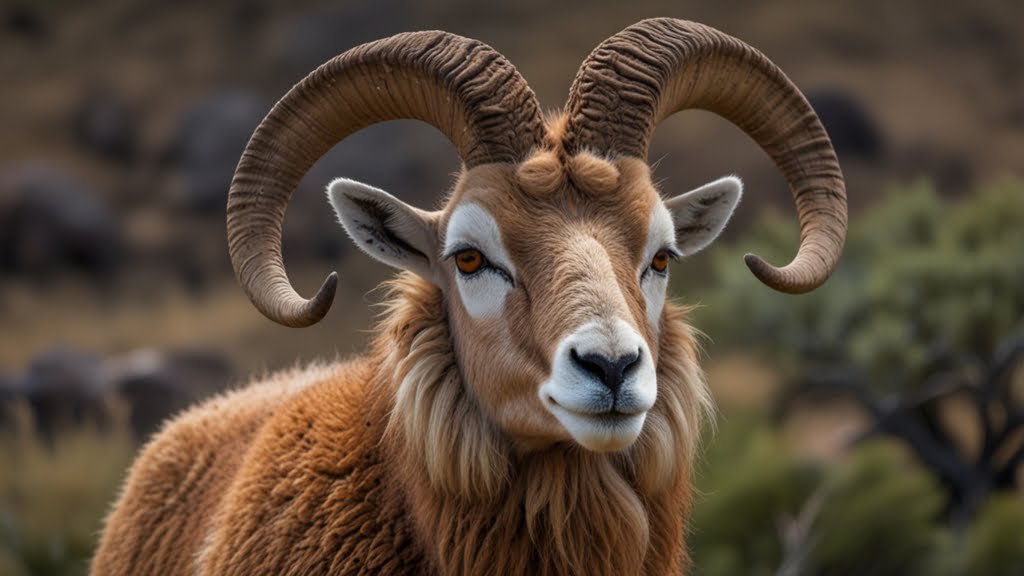Introduction The Urial (Ovis vignei) is a fascinating species of wild sheep that inhabits the rugged terrains of Central Asia. Known for its impressive curved horns and elusive nature, the Urial is a remarkable example of mountain wildlife. In this blog, we will explore seven intriguing facts about the Urial that highlight its unique characteristics, habitat, and conservation status.
Unique Physical Traits of the Urial
The Urial is distinguished by its large, curved horns that are a defining feature of both males and females. Males possess particularly impressive horns, which can reach lengths of up to 100 cm (39 inches). These horns are not just for show; they play a crucial role in battles for dominance and attracting mates during the breeding season.

2. Habitat and Range
Urials are native to the mountainous regions of Central Asia, including parts of Pakistan, Afghanistan, and northern India. They thrive in arid, rocky landscapes at elevations ranging from 1,500 to 3,000 meters. Their ability to navigate these harsh environments with agility is key to their survival.

3. Adaptations for Survival
To survive in their challenging habitat, Urials have developed several adaptations. Their thick fur provides insulation against cold temperatures, while their keen sense of sight and hearing helps them detect predators from a distance. Their climbing skills are exceptional, allowing them to escape danger by scaling steep cliffs.
4. Social Structure and Behavior
Urials are social animals that live in groups, usually consisting of females and their young. Males typically form separate bachelor groups or lead solitary lives outside the breeding season. These groups are highly organized, with a clear hierarchy and social interactions that play a role in maintaining group cohesion.
5. Diet and Feeding Habits
As herbivores, Urials primarily feed on grasses, shrubs, and other vegetation found in their mountainous environment. They have adapted to a diet that can sustain them through seasonal changes, with their feeding habits reflecting the availability of resources throughout the year.
6. Conservation Status
The Urial is currently listed as Near Threatened by the IUCN. Their populations are under threat from habitat loss, poaching, and competition with domestic livestock. Conservation efforts are underway to protect these magnificent animals and their habitats, with initiatives focusing on anti-poaching measures and habitat preservation.

7. Cultural Significance
In the regions where they are found, Urials hold cultural significance and are often featured in local folklore and traditions. Their presence in these areas is not just a testament to their ecological role but also to their importance in the cultural heritage of the mountain communities.
Conclusion
The Urial is a remarkable wild sheep that embodies the resilience and adaptability needed to thrive in mountainous environments. Understanding these seven intriguing facts about the Urial highlights the importance of conserving this unique species and ensuring that future generations can continue to admire its beauty and strength.



